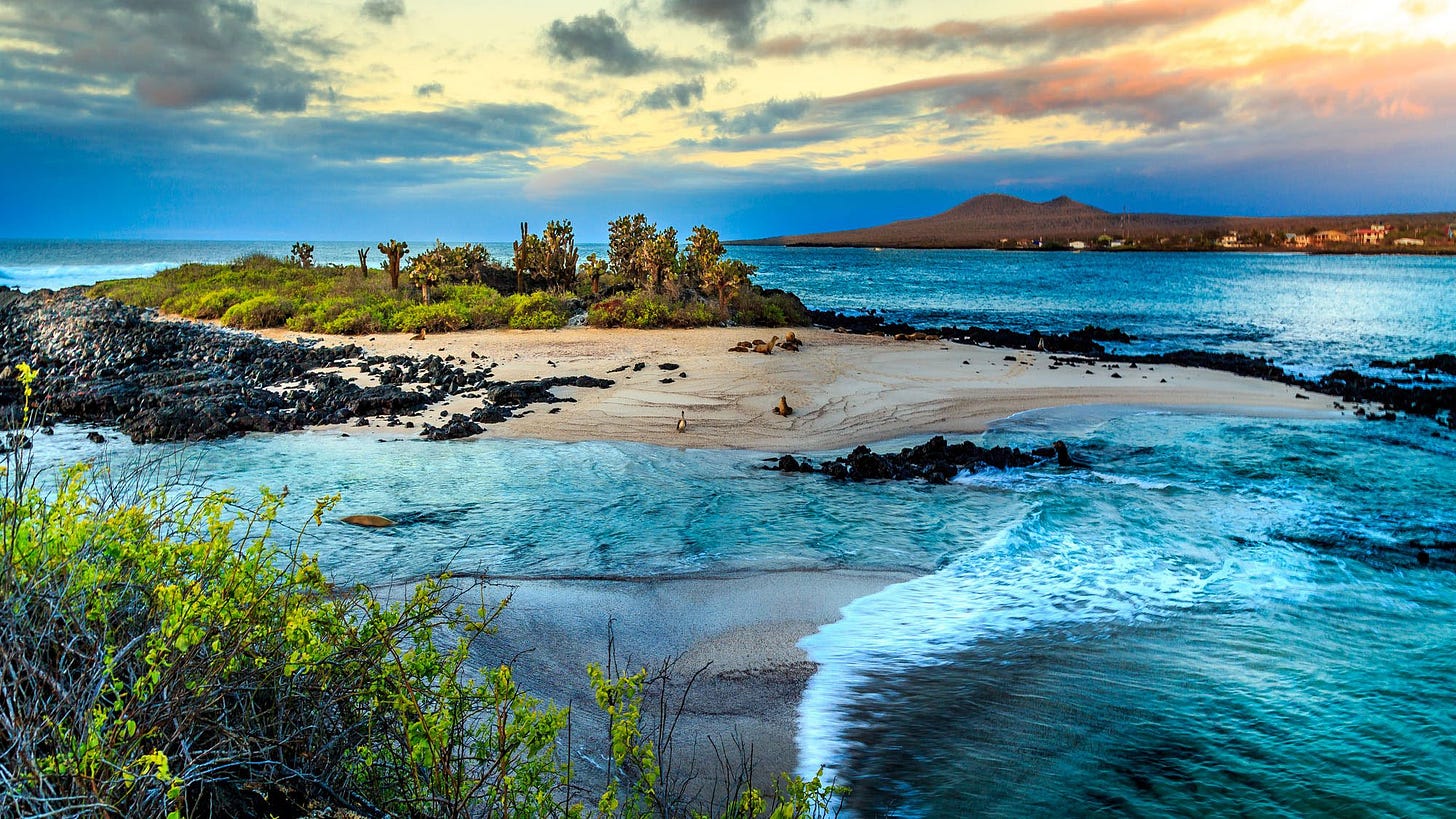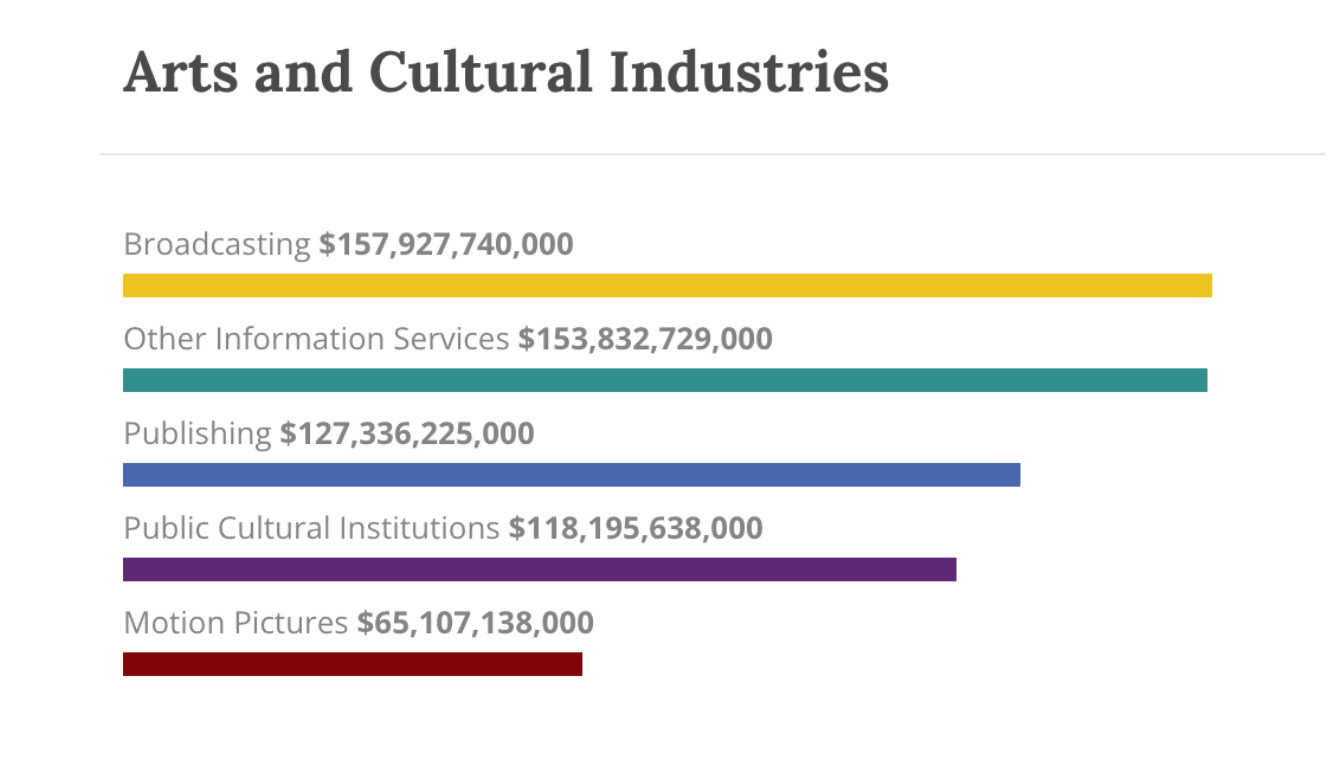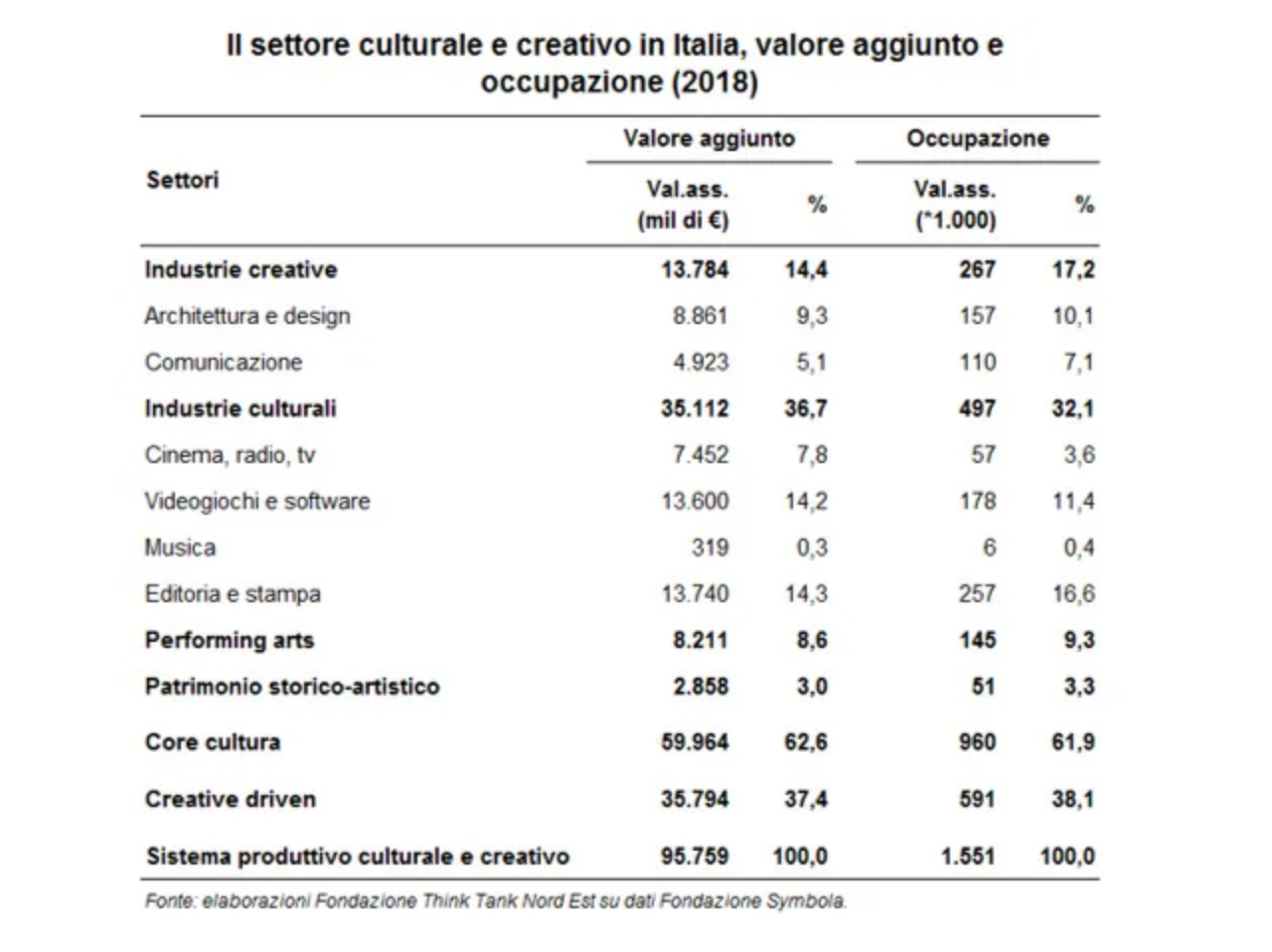Eden
Wherever we go, there we are. Culture has more value than money, but we don't recognize it.
I just saw that Ron Howard1 is to inaugurate the 42ndTorino Film Festival. His new movie—Eden2—will screen during the opening ceremony on November 22 at the prestigious Teatro Regio Torino.
For the film, he chose a contemporary story that likely resonates. 1929—two idealists flee Germany and move to an uninhabited island in search of solitude. Soon more people come with their entourage and commercial plans.
They have bad weather, the fauna is wild, and there’s a total lack of comforts and civilization. All elements that make cohabitation very difficult.
But their greatest challenge is to coexist with people who are desperate and willing to go to any lengths to prevail.
Reminder: You can get extra insights—in-depth information, ideas, and interviews on the value of culture.
Join the premium list to access new series, topic break-downs, and The Vault.
Dr. Friedrich Ritter (Jude Law) and wife Dora Strauch (Vanessa Kirby) reject the values of the middle class of the time, which they believe are destroying the true nature of humanity. Floreana, where they seek solitude, is in the Galápagos archipelago.
But soon their peace is broken.

Heinz Wittmer, a World War I veteran, and his younger wife Margaret has been following Ritter’s dispatches. They join the couple with their son Harry—hoping the unspoiled air might cure his tuberculosis. After all, it seems to keep Strauch’s multiple sclerosis under control.
Just then, the coexistence of the first settlers is disturbed by Eloise Bosquet de Wagner Wehrhorn, a self-described Baroness and the ‘embodiment of perfection,’ and her two lovers.
She plans to built the world’s most exclusive resort on the rocky terrain. The baroness brings an Ecuadorian servant and a piano, along with her deviousness of scheming instigator.
The film is based on a true account of a 1920s German philosopher who sets up an experimental society with his lover/disciple on a remote island in the Galápagos. It all imploded when opportunists come and crash the party.
Galápagos contained clues to the origins of human existence. Charles Darwin spent 19 days studying the islands' flora and fauna in 1835. Which is apt, as the story’s a battle for survival.
The trip that starts with the idealism of Eden goes straight to hell in the end.
A thriller during thriller season in America—in more ways than Halloween can cover. (In Italy we have All Saints Day and the day of the dead. Though commerce has colonized culture with tricks and treats.)
The part about a desire to move to an unspoiled place in the plot made me think about the various parcels of land and properties big tech barons have been buying in various parts of the world. A search for more control over the environment? Perhaps.
This movement, too reminds of something from the past. Students of history may recall the enclosures, the movement that began in 1066 and proceeded rapidly in the period 1450–1640.
Enclosure was used in English landownership to refer to the appropriation of what lords deemed ‘waste,’ in reality common land. By enclosing it, they deprived commoners of their rights of access and privilege.3
There’s an expression we have, we say people become ‘territorial’ when they’re proprietorial, protective. Wherever we go, there we are. Oligarchs in particular are a bit the same the world over. They want more power, because money is not satisfying.
Money is a curious thing. There’s only so much work money can do in a system. Once an oligarch reaches a threshold, the money above that threshold becomes unavailable to do work. It exists but having nothing to spend it on it has no value in use.
In fact, it becomes a counter value. It’s nasty stuff.
If this kind of person owns a media company, for example, he destroys social capital to acquire more money he can’t use. Which creates an energetic deficit from which no work can be done.
(The phenomenon is also useful to understand the hidden mechanics of exchange value. The less one values money, the more likely they’ll use more of it to pay a higher price for things—like luxury goods. It’s the opposite of what economists tell us.)
Now take Eden, which premiered at the Toronto International Film Festival on September 7, 2024.4 The director oversaw casting and scouted filming locations himself. That means artistic freedom.5
There’s a determination in the group to forge their own path. They travel far and away to create a new life for themselves. I admit the idea of an escape to a new land has some allure. Sometimes a place doesn’t work to have a life anymore.
Literature is filled with such tales for a reason—they’re based on a fundamental human yearning. Clare Randell, the ‘Outlander,’ may find herself in 18th century Scotland by mistake the first time.
But after twenty years in modern America, she decides to go back—to find love again, and a sense of belonging. I won’t get into the story here, I did so in time travel, but for a sense of what that felt like, we can rely on music.
The original song in the opening credits of the series is an adaptation of a classic Scottish folk tune, ‘The Skye Boat Song,’ created by McCreary. It chronicles Bonnie Prince Charlie’s escape at the Battle of Culloden—a connection to the Jacobite Uprising.
In keeping with the times, there’s a change to the theme every season. Season 1’s is very Scottish. Season 2 adds a string instrument called a ‘viola de gamba’ to add a Parisian sound—as that’s the principal location.
For season 3 in Jamaica, the music has a Caribbean flair, with drum beats. As the protagonists make it to America in season 4, there’s a slower pace with the addition of a banjo, which give it a bluegrass sound.
Season 5 performed by the Cape Town Philharmonic Choir, featuring soloist Griogair Labhruidh is my favorite. The choral mirrors a sense of belonging in the community the two have made with their extended family.
The a capella version reminds me of Gregorian chants. Every time I listen to it, I’m struck by a profound peace.
The evolution is necessary to complement the larger narrative. Because things happen, people change, places change, and the transformation becomes part of culture (though that change is slower.)
They’re the same notes and same lyrics with different interpretations. However, the more things change, the more some things stay the same. Hence, even with the music, there’s a Scottish core that remains—the soul of what it means to be a Highlander.
“The bagpipes and the Scottish and Celtic musical influence is very much rooted in Jamie and Claire. That will always be their sound. They could go to Mars, and I’ll still use the penny whistle or the uilleann bagpipes or the fiddle. It’s like a blanket for us. We get to wrap up in it.”
Bear McCreary
Three elements contribute to value—1./ emotion, individual and collective ‘stories in the world,’ 2./ details as connected with a larger narrative, 3./ language as a window to identity. (Each is the topic of an in depth podcast you can listen to via the links.)
Sing me a song of a lass that is gone,
Say, could that lass be I?
Merry of soul she sailed on a day
Over the sea to Skye.
Billow and breeze, islands and seas,
Mountains of rain and sun,
All that was good, all that was fair,
All that was me is gone.
Sing me a song of a lass that is gone,
Say, could that lass be I?
Merry of soul she sailed on a day
Over the sea to SkyeThe Skye Boat Song, Outlander
We do our best work when we experience resistance. Resistance is part of the pain of living—there’s plenty of it, and that’s the reason for art and culture. Because as humans, we cannot help our desire and inclination to create and imagine a different world.
Culture is a path to bring that world to life. Even when limping, the arts continue to make up large parts of the economy. The reason is our intrinsic understanding of the benefits in both making and enjoying culture.

In 2021, The U.S. Bureau of Economic Analysis reports that arts and cultural production accounts for $1,016,249,142,000 and 4.4 percent of the U.S. economy, contributing 4,851,046 jobs.
United States Arts and Culture Value Add changed by 14.43 percent between 2020 and 2021.
Which is impressive, but proportionally low, given estimated resident population of 333,287,557 on July 1, 2022, according to the U.S. Census Bureau. Especially if you compare the data with Italy’s report.
The value-add to the Italian economy is nearly 17 percent. Bologna and Modena rank in the top ten cities both for value add, and occupation.

It’s much easier to be immersed in history and culture when in Italy (and many other European countries) than in America. There, “people consider art a heritage to be protected and enjoyed, a dynamic cultural expression that belongs to the community.”
Art is the creation of value that contributes to social development. The cultural and artistic assets of the past are a historical testimony and possess aesthetic and immaterial qualities. They’re a symbolic and non-reproducible component of society.
In 2018, Italy’s cultural and creative production system generated €95.8 billion ($104.15) of added value, equal to 6.1 percent of the total of the Italian economy. At the time, Italy’s population was around 59,433,744.
At the time, culture and creativity employed more than 1.5 million people (also 6.1 percent of the total), a figure similar to the construction sector and the education system (public and private). There’s a broader impact to other sectors.
The ancient Greeks recognized the cathartic value of theater. Hence Greek tragedy remains one of the most revered and influential forms of drama, renowned for its exploration of timeless human themes.
Arts and culture add value beyond economics. Two decades of research found that the arts and creative activities provide direct and indirect benefits to health and well-being.6 Specifically, they:
help people with mental illness
support care for people with acute conditions
support people with neurodevelopmental and neurological disorders
contribute to the treatment of chronic degenerative diseases
participate in end-of-life care
My cousin is a psychologist who works with people who’ve experienced trauma. She uses art and creative activities as part of the healing journey. Arts and culture are effective in disease prevention and health promotion as well.
influence the social determinants of health inequalities
support the child’s development—e.g. first 1000 days of life
encourage behaviors that promote health
help prevent chronic degenerative diseases
support care and the care relationships
Culture has more value than money. But we don’t recognize it.
Even Italians remember Howard as the unforgettable face of Richie Cunningham in Happy Days. As a director, he’s won two Oscars® and made unforgettable movies, such as Apollo 13, A Beautiful Mind, and The Da Vinci Code.
The movie is an exclusive for Italy, through Italian International Film (Luciano Media Group) in collaboration with Rai Cinema and will be soon be distributed by 01 Distribution.
Before the Enclosure Movement, common-use land was standard and ordinary people did not have to struggle to find places to grow crops. By Enclosing, the landed and titled person who owned a swath of land rewarded a loyal servant or provided support to a family member. The first documented case of this reward structure by ruling class was done by William I.
William invaded and conquered England in 1066. He distributed land among 180 barons who were allowed to hold the land as tenants. He promised the English people that he would honor the current laws, which permitted commoners to exercise their ancient rights to the use of the land. But these would become the first steps toward feudalism.
In the UK, land ownership is governed partly by this system that William set up. So even if you own land in England today, the Crown technically owns and is leasing it to you.
Imagine Entertainment, Howard’s company co-founded with fellow director Brian Glazer, launched the production. AGC and Library Pictures International are principal financiers, with additional financing by Elevate Production Finance, Copper Island Entertainment, and Medan Productions, with support from the Queensland Government through Screen Queensland’s Production Attraction Strategy, the City of Gold Coast, and the Australian Federal Government’s Location Offset.
Queensland, Australia had “locations that happen to fit the story that I want to tell,” Howard said as much himself in a brief interview with Australia’s 9 News channel. Galápagos hosted on-location shooting.
‘What is the evidence on the role of the arts in improving health and well-being?: A scoping review,’ Daisy Fancourt, Saoirse Finn.




